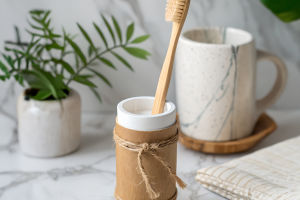Drum Set Secrets
Have you ever wondered how the drum set, the heart of a jazz band, came to be? As we dive into this story, let's explore how this unique combination of drums and cymbals creates the rich rhythms we love.
The drum set, often called the jazz drum, includes parts like a bass drum with a foot pedal, a snare drum, at least two tom-toms, one or two suspended cymbals, a hi-hat cymbal with a pedal, and other cymbals.
Together, these parts offer a wide range of sounds that drummers skillfully combine using different sticks — wooden drumsticks, wire brushes, or bundled sticks — to bring jazz music its special charm.
The Origin of the Drum Set
The drum set began in the United States, created specifically to accompany jazz music. The word 'jazz' has a debated origin, with some stories linking it to early musicians in vibrant communities, though this is not universally agreed upon. In the early days, vibrant communities played lively music to entertain themselves. Over time, this energetic style of music became known as jazz, and the drum set quickly became its essential backbone.
The Evolution of Jazz Drumming
Tracing back to around 1890, the drum set's early form was born when stage band drummers broke free from strict sheet music rules and embraced free-flowing rhythms. This marked the birth of modern drumming styles. Particularly in New Orleans, home to jazz and ragtime bands, drummers borrowed ideas from parade bands' bass and snare drums.
They invented a "double strike" technique where the bass and snare drums were placed so they could be played back and forth, striking both with the stick's tip and handle. This gave more texture to the rhythm. Drummers often improvised, changing how they played to suit the music, sometimes hitting the bass drum with the stick's handle instead of just the tip, adding layers to the sound.
The Drum Set's Structure and Playing Techniques
Our drum set revolves around the bass drum, supported by the hi-hat, snare, toms, and cymbals. Each part has its own way to play:
- The bass drum is played with the right foot resting naturally on the pedal. The ankle and foot remain relaxed, moving up and down with the pedal. While the toes may lift a bit, the heel should stay in contact with the pedal for smooth action.
- The hi-hat cymbals are played with the left foot. Before starting, the left heel lifts slightly. Then the foot moves in a flowing sequence: heel down, ball of foot up, ball down, heel up. All movements must feel natural, not too high or too slow.
- The snare drum is flexible. Both hands can use a wrist-down grip to play different rhythms.
- Playing the hi-hat with sticks involves precise techniques. Usually, the right hand taps rhythms with a straight wrist motion. For cymbals that hang (suspended cymbals), players pick which hand to use based on the song, often the right. Striking the cymbal edge with the stick shaft can add dramatic effects when needed.
How to Care for Our Drum Set
Before putting the drum set together, we must clean every part carefully. Sweat, water, and other liquids can damage the drums, while oil from our fingers can dull cymbals' shine. Simply wiping with a soft towel during assembly or disassembly protects the drums. Regular checks ensure screws hold cymbals firmly and that cymbal felts (the pads under cymbals) are in good shape.
Parts like the hi-hat stand and bass drum pedal move a lot and need lubrication now and then to keep running smoothly. If you hear annoying squeaks from springs, it's best to replace them promptly for comfortable play and great sound.
Maintaining Drumheads and the Drummer's Role
Drumheads, especially the top ones we strike, affect tone and feel a lot. Regularly changing old drumheads keeps the sound bright and the touch responsive. Using worn-out heads not only dulls the music but also makes playing uncomfortable.
As drummers, we hold a key role in controlling the pace and rhythm in a band. In jazz, our tight teamwork with other musicians is vital. The way we "cut" rhythms sharply and cleanly can shape the entire performance, giving life to the music in the most thrilling way.
Let's Keep the Beat Alive Together
Now that we've explored the origins, structure, and care tips for the drum set, we understand how history and proper maintenance work hand in hand to keep this instrument vibrant. No matter your level of experience, treating your drum set with care will ensure it continues to produce great sounds for many years.
Have you ever experienced the energy of a live jazz drummer? Which part of the drum set catches your attention the most? We'd love to hear your thoughts—let's keep the rhythm alive together!
Copyright © zogu 2021 - 2025. All Right Reserved.


